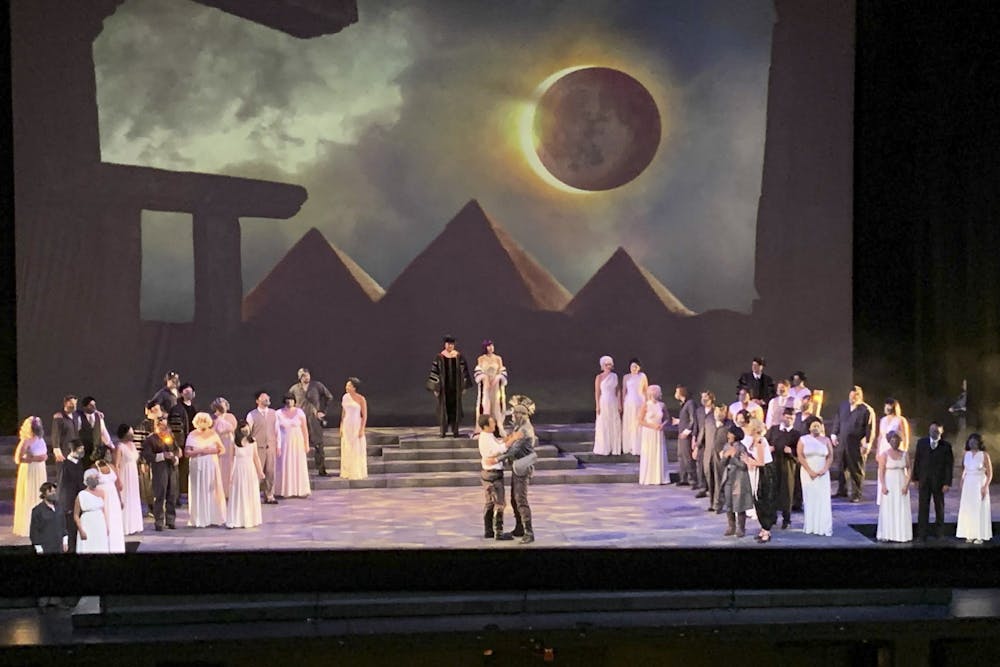I attended the performance of “The Magic Flute” at the Musical Arts Center at the Jacobs School of Music this past weekend. I was moved because it was my first live opera performance since the pandemic began.
Walking into the MAC is like entering a different world. The rows of crimson seats, the bustling crowds, the orchestra tuning in the pit; they’re all sights and sounds of a world getting ready to take everyone on a journey.
Mozart’s operas have been performed so frequently it’s rare to see a different take, but this performance still managed to surprise. A mix of Gatsby, steampunk, film noir and ancient Egyptian themes provided a dazzling array for the eyes.
Even the more traditional costumes presented themselves in innovative ways, like Papageno and Papagena’s usual bird-themed garments being interpreted as 1930’s pilot outfits
I thought the frequent nods to silent films were fascinating — scenes were introduced with descriptions on a grainy, flickering screen. In the sound-reliant world of opera, taking inspiration from a genre characterized by silence is a bold choice.
What makes silent films timeless is their ability to communicate universal themes and stories without language or technological trends. The performance was a reminder that great opera can achieve the same thing.
The opera’s storyline relies heavily on tropes. There’s a prince on a quest, an evil sorceress, a serpent and a princess in distress. Mozart’s brilliant writing cuts straight through to a universal human experience.
When the characters of Papageno and Pamina sang a duet about the desire for love and connection, it didn’t matter that I was listening to a work by a Viennese man in the eighteenth century, performed in the twenty-first century. The song was as relevant then as it has been since the day it was first premiered.
I also realized there was another aspect of live performance I had taken for granted was the audience. I wasn’t just connecting to the performers on the stage. I was connecting to everyone around me. I could hear the murmurs whenever a singer had a beautiful solo, children exclaiming over the set design and excited conversations during the intermission.
During Pamina’s famous grief-stricken aria, “Ach, ich Fühls,” the collective silence that seized the audience was just as striking as the music itself. I experienced not just how Mozart’s music spoke to me but how it spoke to everyone else in different ways. Tamino wielding the magic flute captivated not just the mythical creatures of the story in a spell but the audience as well.
When we all rose to our feet in a standing ovation at the end of the performance, it felt like we were not just cheering for the performance we had experienced together, but for the irreplaceable joy and excitement stemming from a live performance.
After over a year without live performances, this was the perfect reminder opera can bring us together.




